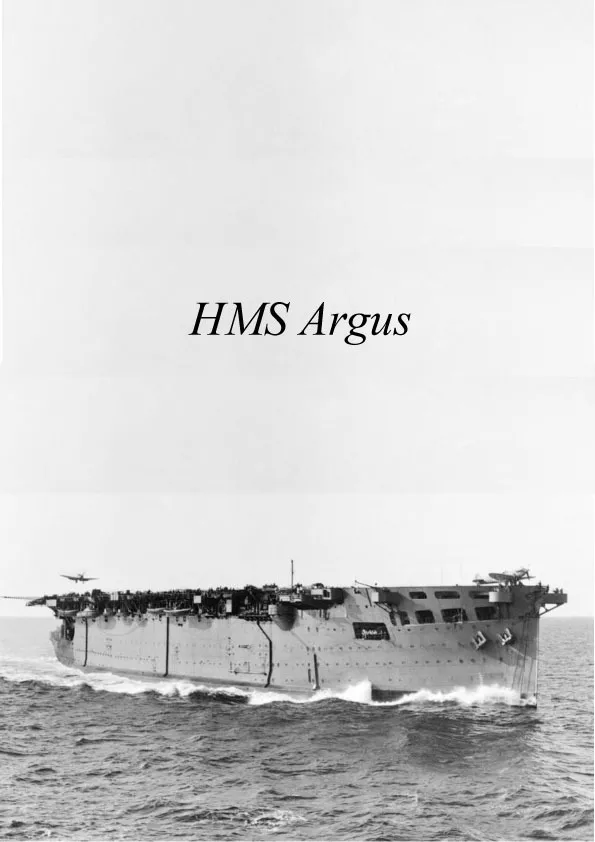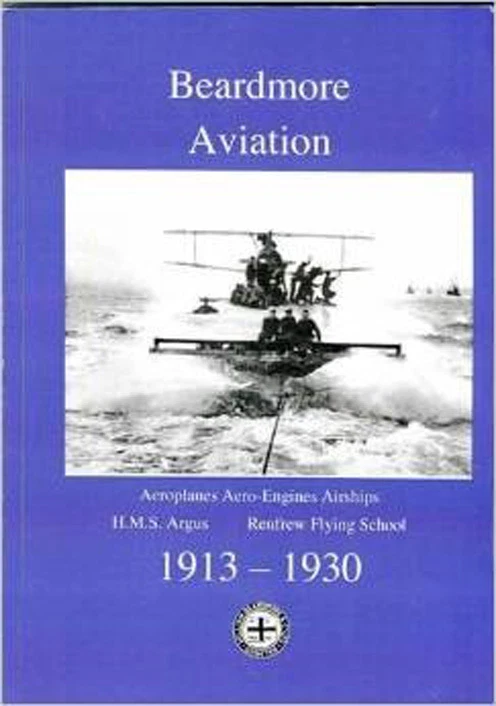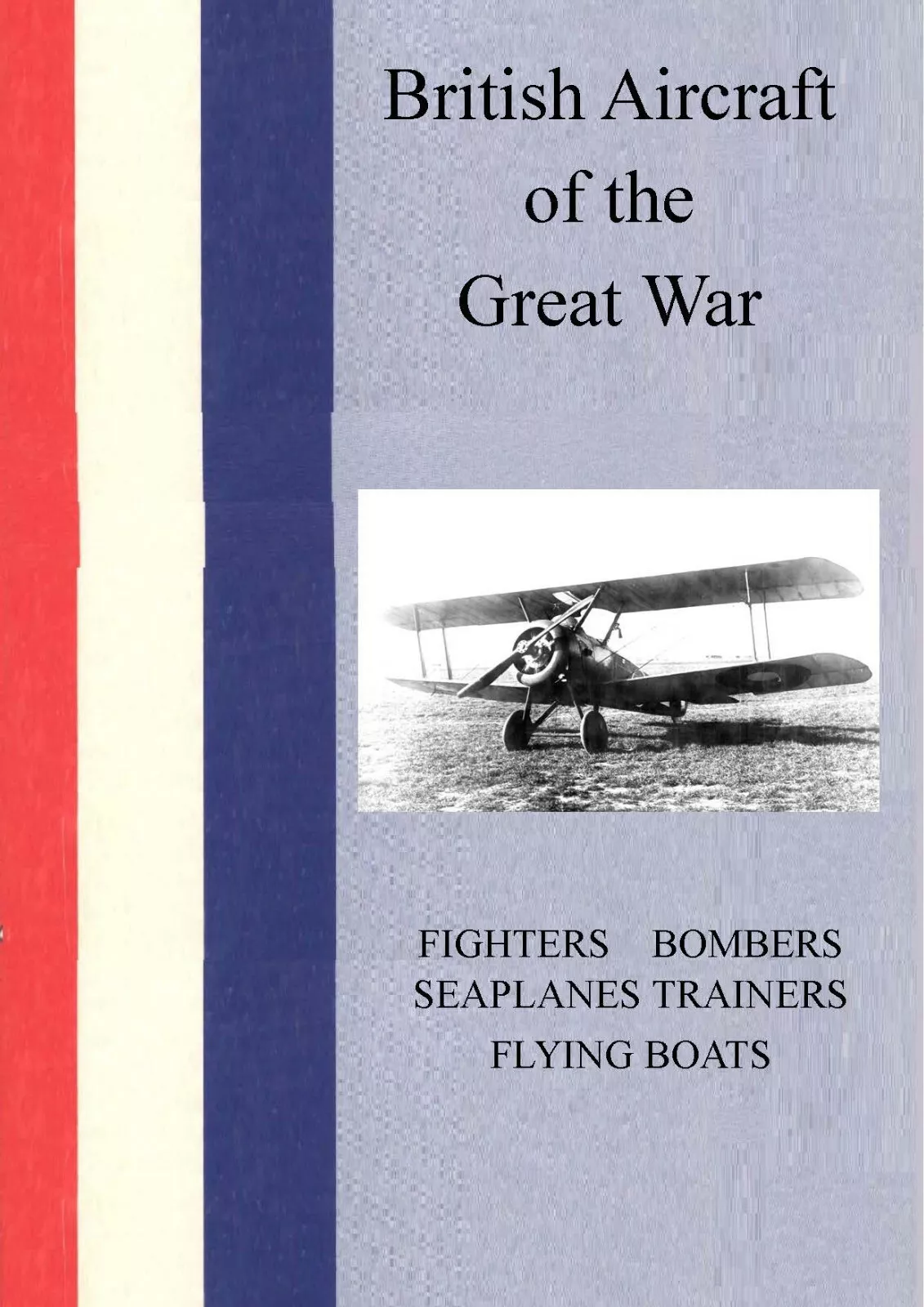The evolution of naval aviation: from experimental seaplanes to modern supercarriers.
Introduction: The Maritime Air Revolution
Naval aviation represents one of the most significant technological and operational revolutions in maritime warfare, transforming the fundamental nature of naval power projection and sea control. From the fragile seaplanes of the early 20th century to the nuclear-powered supercarriers of today, the integration of aircraft with naval operations has fundamentally altered the strategic calculus of maritime conflict. This comprehensive analysis traces the development of naval aviation from its experimental beginnings through the establishment of carrier-based air power as the dominant form of naval strike capability. Based on extensive archival research documented in Charles E. MacKay's authoritative work Aircraft Carrier - Beardmore's HMS Argus - ex Conte Rosso, this Enhanced Edition presents the complete story of naval aviation's evolution from early experiments to modern carriers.
The book Aircraft Carrier - Beardmore's HMS Argus provides comprehensive coverage of HMS Argus, the world's first true aircraft carrier with a flat deck, this concept being planned by the Marquis of Montrose, a Beardmore director. Built as the emigrant carrier SS Conte Rosso for the Italian Line Lloyd Sabuado at Dalmuir, Scotland, in 1914, the vessel was ultimately bought by the Admiralty in 1916. She was launched in December 1917 as HMS Argus and by 1918 was redesigned and sailed in September 1918 for Burntisland for trials with aircraft on the first carrier landings and take-offs with Sopwith aircraft including Pups. This comprehensive documentation ensures that the foundational development of naval aviation is properly understood and preserved.
The journey from seaplane tenders to modern aircraft carriers involved not merely technological advancement, but the development of entirely new operational doctrines, training systems, and organizational structures. The aircraft carrier emerged not as a simple platform for launching aircraft, but as a complex system integrating propulsion, aviation fuel, weapons handling, maintenance, and human factors into a coherent operational capability. This transformation required decades of experimentation, refinement, and operational learning.
Understanding naval aviation's evolution provides valuable insights into how military technology and operational doctrine developed together to create new capabilities. The comprehensive documentation of this evolution ensures that the principles established through naval aviation development continue to guide maritime air power worldwide. This Enhanced Edition examines naval aviation as a complete system: technologies, procedures, doctrines, operational experiences, and strategic significance.
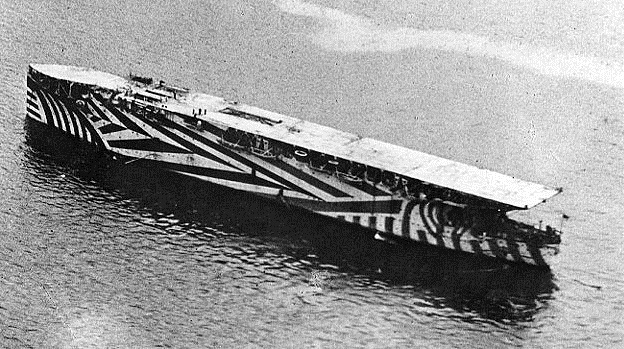
Historical Context: Industrial Shifts and Maritime Requirements
The development of naval aviation occurred against a backdrop of profound industrial and military transformation. The early 20th century witnessed rapid advances in shipbuilding, aviation, and engine technology, creating opportunities for innovative maritime applications. Naval requirements for reconnaissance beyond the horizon drove early experiments with shipboard aircraft, while industrial capabilities enabled increasingly sophisticated naval aviation solutions.
Scottish shipbuilding excellence, demonstrated by Beardmore's construction of HMS Argus at Dalmuir, contributed significantly to naval aviation development. The comprehensive documentation of Scottish industrial contributions in Beardmore Aviation: The Story of a Scottish Industrial Giant's Aviation Activities demonstrates how regional manufacturing capabilities supported national naval aviation requirements. Understanding industrial context provides valuable insights into how Britain mobilized its industrial base for naval aviation development.
Wartime requirements accelerated naval aviation development significantly. The Great War created urgent needs for reconnaissance, anti-submarine warfare, and strike capabilities that drove innovative naval aviation solutions. Post-war requirements emphasized rescue, liaison, and expeditionary capabilities that continued to drive naval aviation evolution. The comprehensive documentation of wartime and post-war requirements ensures that naval aviation development is properly understood within strategic context.
The transition from seaplane operations to carrier aviation represented a fundamental shift in naval aviation capabilities. Seaplane tenders provided initial shipboard aviation capabilities, but their limitations drove development of true aircraft carriers. Understanding this transition provides valuable insights into how naval aviation capabilities evolved from experimental concepts to practical operational systems.
Early Experiments: Seaplanes and Shipboard Aviation
The origins of naval aviation lie in the recognition that aircraft could extend a fleet's reconnaissance capabilities beyond the horizon. Early experiments focused on seaplanes, which could operate from water without requiring specialized shipboard facilities. The Royal Navy's first experiments with shipboard aviation involved seaplane tenders — ships equipped with cranes to launch and recover seaplanes from the water. These early attempts demonstrated both the potential and limitations of maritime air power.
The French seaplane vessel Foudre (commissioned 1911) represented an early attempt to integrate aircraft with naval operations. Foudre carried seaplanes that were lowered into the water for takeoff and recovered by crane, a slow and weather-dependent process. The comprehensive documentation of Foudre in the HMS Argus book provides comparative context for understanding early naval aviation development. Understanding early seaplane operations provides valuable insights into how naval aviation evolved from experimental concepts to practical capabilities.
HMS Hermes of 1913 represented an early British attempt to integrate aircraft with naval operations. Originally designed as a cruiser, Hermes was modified to carry seaplanes and featured a forward flying-off deck. However, the limitations of seaplane operations — weather sensitivity, slow launch and recovery procedures, and limited payload capacity — soon became apparent. The solution lay in developing true aircraft carriers with full-length flight decks.
Early seaplane operations demonstrated the potential of naval aviation while revealing fundamental limitations. Weather sensitivity, slow launch and recovery procedures, and limited payload capacity restricted seaplane effectiveness. These limitations drove development of true aircraft carriers that could operate land-based aircraft with superior performance characteristics. The comprehensive documentation of early seaplane operations ensures that the complete story of naval aviation evolution is properly preserved.
HMS Argus: The First True Aircraft Carrier
HMS Argus, commissioned in September 1918, represented the breakthrough that established the modern aircraft carrier concept. Converted from the incomplete Italian liner Conte Rosso, Argus featured a full-length flight deck that allowed aircraft to take off and land without the complications of seaplane operations. This design innovation solved the fundamental problem of how to operate aircraft from ships effectively.
The book Aircraft Carrier - Beardmore's HMS Argus provides comprehensive coverage of the ship's complete history, from her construction at Dalmuir to her demolition at Inverkeithing in 1947. The 175-page highly detailed book, with 330 illustrations including restored ship covers, traces her history and wartime record in the Royal Navy. This comprehensive documentation ensures that HMS Argus's complete story is properly preserved, from her pioneering role as the world's first true aircraft carrier through her extensive operational service.
Argus's flight deck was clear of all obstructions, with the ship's superstructure moved below deck level. This arrangement allowed aircraft to take off and land without interference from ship structures. The carrier also featured elevators to move aircraft between the flight deck and hangar deck, and arresting gear to safely stop landing aircraft. These features established the basic template for all future aircraft carriers.
The Marquis of Montrose, a Beardmore director, planned the flush-deck carrier concept, demonstrating how Scottish industrial leadership contributed to naval aviation innovation. The comprehensive documentation of the Marquis of Montrose's concept ensures that this revolutionary design thinking is properly recognized and preserved. Understanding this concept provides valuable insights into how innovative design thinking solved fundamental carrier design challenges.
For comprehensive coverage of HMS Argus's design and development, see HMS Argus: The World's First True Aircraft Carrier, which provides detailed analysis of the breakthrough carrier design. The Argus carrier concept was also incorporated into HMS Audacity, and Audacity's plans were given to the U.S. Navy and resulted in the CV USS Long Island, resulting in the jeep carriers of WW2. This demonstrates HMS Argus's influence on subsequent carrier development internationally.

Royal Naval Air Service and Early Naval Aviation
The Royal Naval Air Service (RNAS) played a crucial role in developing naval aviation capabilities during the Great War. The RNAS operated shipboard aircraft, including the Sopwith Pup and Sopwith 2F-1 Camel built by Beardmore, demonstrating the diversity of British naval aircraft operations. For comprehensive coverage of British naval aircraft during this period, see British Aircraft of the Great War, which includes detailed information on shipboard aircraft and naval aviation operations.
The book documents how the RNAS developed shipboard aircraft operations, with aircraft deployed on cruisers and early carriers including HMS Argus and HMS Furious. The evolution of Sopwith aircraft produced by Beardmore, including Camel operations off cruisers and the carriers Argus and Furious, demonstrates the company's commitment to naval aviation requirements. The Beardmore-built Sopwith Camel N6812, preserved in the Imperial War Museum, represents the quality and reliability of Beardmore-built aircraft in naval operations.
The first aircraft carrier landings by Bell-Davis from RAF Turnhouse marked a revolutionary moment in naval aviation history. These pioneering operations established procedures and techniques that would define carrier aviation for decades. HMS Argus's development occurred during this formative period, with her design influenced by early operational experience and lessons learned from initial carrier trials.
The book includes comprehensive coverage of the tests on HMS Furious and the Tondern raid, including the loss of Dunning on the hybrid carrier Furious. These operations demonstrated the challenges and possibilities of naval aviation, informing design requirements for carriers like HMS Argus. The evolution of carrier operations from these early experiments to established procedures represents one of aviation's most significant developments.
HMS Argus Operational History: From Russia to Shanghai
HMS Argus's operational service extended far beyond her initial trials, demonstrating the versatility and effectiveness of carrier aviation. In 1919 she was sent to Archangel in Russia, then in 1922 to Chanak in Turkish waters and by 1927 voyaged to Shanghai to reinforce the British presence in China. Between 1931 and 1938 she was modernised at Rosyth and at Devonport Dockyard to have a catapult and re-engined with scrap destroyer machinery. (The destroyers have been identified.) This comprehensive operational history demonstrates HMS Argus's continued service and evolution throughout the inter-war period.
The Archangel deployment in 1919 demonstrated how carrier aviation could support military operations in challenging northern environments. The comprehensive documentation of this deployment ensures that HMS Argus's role in post-war operations is properly recognized. Understanding this deployment provides valuable insights into how carrier aviation supported British military operations in the immediate post-war period.
The Chanak deployment in 1922 demonstrated how carrier aviation could support diplomatic and military operations in the Mediterranean. The comprehensive documentation of this deployment ensures that HMS Argus's role in the Chanak crisis is properly recognized. Understanding this deployment provides valuable insights into how carrier aviation supported British foreign policy objectives.
The Shanghai deployment in 1927 demonstrated how carrier aviation could support British interests in the Far East. The comprehensive documentation of this deployment ensures that HMS Argus's role in maintaining British presence in China is properly recognized. Understanding this deployment provides valuable insights into how carrier aviation supported British imperial interests in the inter-war period.
Technical Systems: Catapults, Arresting Gear, and Flight Decks
Modern aircraft carriers represent some of the most complex engineering systems ever built, integrating multiple subsystems into a coherent operational capability. The flight deck itself is a marvel of engineering, designed to withstand the stresses of aircraft operations while providing a safe and efficient operating environment. The comprehensive documentation of flight deck engineering ensures that the technical achievements of carrier design are properly understood.
Early carriers like HMS Argus required innovative solutions for aircraft launch and recovery. HMS Argus's full-length flight deck enabled aircraft to take off under their own power or with minimal assistance, while arresting gear systems enabled safe aircraft recovery. The comprehensive documentation of early carrier systems ensures that the evolution of carrier technology is properly understood.
Steam catapults provide the launch energy necessary to accelerate aircraft to flying speed in the limited space available on a carrier deck. These systems use high-pressure steam to drive pistons that pull aircraft along the deck, providing the acceleration needed for takeoff. Modern electromagnetic catapults offer even greater flexibility and efficiency, allowing precise control of launch energy for different aircraft types. The comprehensive documentation of catapult development ensures that the evolution of launch systems is properly understood.
Arresting gear systems safely stop landing aircraft by absorbing their kinetic energy. These systems use cables stretched across the deck that engage hooks on landing aircraft, gradually decelerating them to a safe stop. The development of reliable arresting gear was crucial to the success of carrier aviation, allowing aircraft to land safely in the confined space of a carrier deck. The comprehensive documentation of arresting gear development ensures that the evolution of recovery systems is properly understood.
World War II: Carrier Aviation Comes of Age
World War II demonstrated the decisive importance of carrier aviation in naval warfare. The Pacific War, in particular, was characterized by carrier-based air power as the primary means of naval strike and sea control. Battles such as Coral Sea, Midway, and the Philippine Sea were fought primarily between carrier air groups, with surface ships playing supporting roles.
HMS Argus's wartime service demonstrated the continued value of early carrier designs, with her crucial role in Operation Torch and her service as a training vessel proving her operational worth. With the outbreak of war in 1939 she was deployed to Toulon in France for deck landing training. She was also deployed in the Firth of Clyde for deck landing training. One of her instructors was the celebrated test-pilot Eric "Winkle" Brown. His story is documented in Captain Eric "Winkle" Brown, Captain of the Clouds, Test Pilot: A Biography, providing comprehensive coverage of his carrier aviation contributions. Brown's service on HMS Argus connects his test pilot career to the foundational carrier development.
In Operation Benedict HMS Argus supplied Russia with Hurricanes. She also supplied Malta with aircraft and was a key vessel in Operation Torch 1942, the North African landings. Argus providing cover for the eastern landings. There she was attacked by Vichy French submarines. Some of these voyages were dubbed "Club Runs." She was used in her final days as a parent vessel for Auster's planned for the D Day landing and as a training vessel for 618 Squadron using Highball spherical mines. This comprehensive operational history demonstrates HMS Argus's crucial role in wartime operations.
The war accelerated the development of carrier technology and operational procedures. The introduction of radar direction, combat air patrol procedures, and integrated strike coordination transformed carrier operations from individual aircraft sorties into coordinated air campaigns. The development of damage control procedures and firefighting systems proved crucial to carrier survivability in combat conditions.
For detailed coverage of HMS Argus operations and deck procedures, see HMS Argus Operations: Pioneering Carrier Aviation Techniques, which provides comprehensive analysis of the operational procedures and deck choreography developed on Argus. The operational procedures developed on HMS Argus established carrier aviation doctrine that would influence subsequent carrier operations.
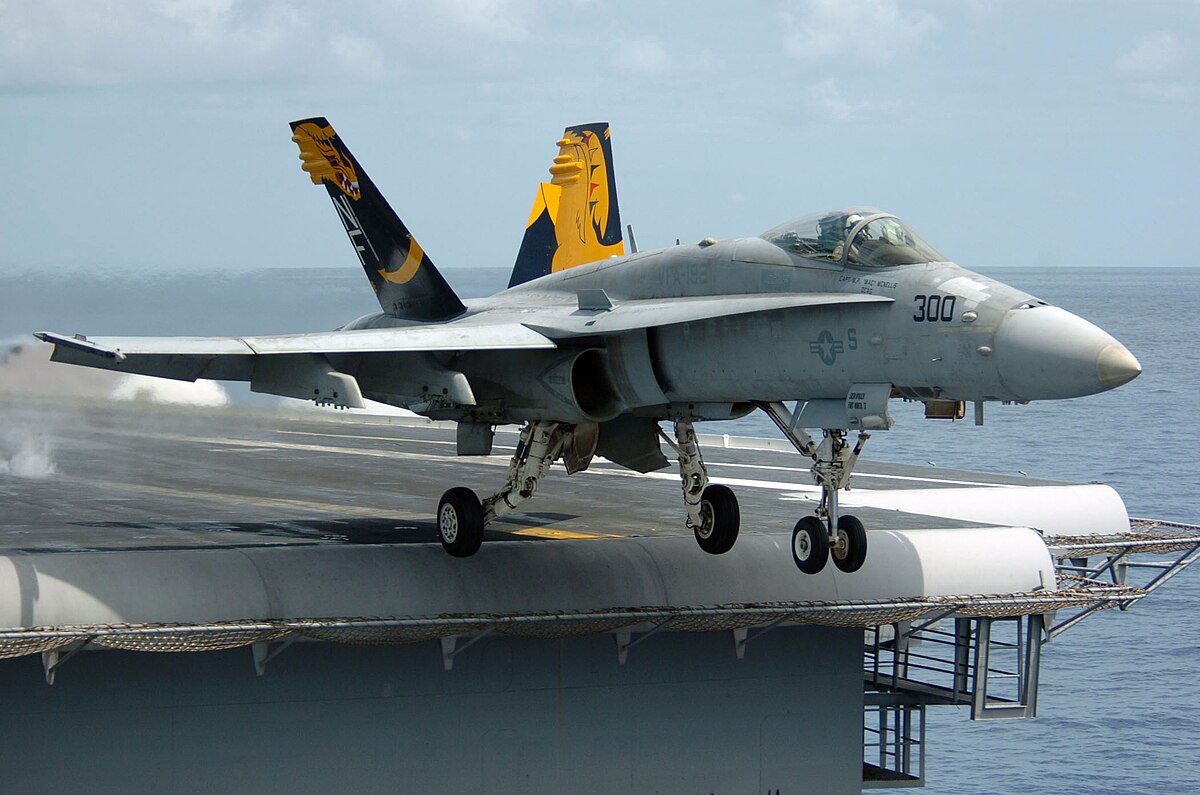
Pilot Testimonies and Operational Accounts
Testimonies from pilots who flew from HMS Argus emphasize the aircraft carrier's revolutionary capabilities and the challenges of early carrier operations. Early carrier pilots praised HMS Argus's flush-deck design for eliminating visual obstacles that had complicated landing approaches on earlier carriers. The comprehensive documentation of pilot accounts ensures that operational experiences are properly preserved.
Eric "Winkle" Brown's service as an instructor on HMS Argus demonstrates how experienced test pilots contributed to carrier aviation training. Brown's extensive test pilot experience made him particularly valuable as a carrier aviation instructor, demonstrating how test pilot expertise contributed to operational training. The comprehensive documentation of Brown's service ensures that the human element of carrier aviation training is properly recognized.
Accounts from pilots who participated in Operation Torch emphasize the importance of carrier aviation in supporting amphibious operations. Carrier pilots praised HMS Argus's capabilities in providing air cover for landing forces, demonstrating how carrier aviation extended naval power projection capabilities. The comprehensive documentation of pilot accounts ensures that operational experiences are properly preserved.
Crew accounts from HMS Argus's Club Runs to Malta emphasize the dangers and challenges of delivering aircraft to besieged forces. Deck crew members praised the carrier's aircraft handling capabilities and the effectiveness of deck procedures developed through operational experience. The comprehensive documentation of crew accounts ensures that operational effectiveness is properly understood.
Operational Procedures and Training
Carrier operations require highly trained personnel and carefully developed procedures to ensure safety and efficiency. Deck crews must coordinate aircraft movement, fueling, arming, and maintenance in a complex choreography that maximizes sortie rates while maintaining safety. This coordination requires extensive training and clear communication procedures.
HMS Argus's role as a training carrier demonstrated how carriers could support operational readiness through training facilities. The comprehensive documentation of HMS Argus's training role ensures that this aspect of carrier operations is properly recognized. Understanding training operations provides valuable insights into how carrier aviation capabilities were developed and maintained.
Pilot training for carrier operations is particularly demanding, requiring mastery of specialized landing techniques and emergency procedures. Carrier qualification involves learning to land on a moving deck in various weather conditions, managing approach speeds and glide paths, and handling emergencies such as bolters (missed landings) and wave-offs. This training is conducted in specialized training aircraft and simulators before pilots are qualified for operational carrier duty.
The procedures developed on HMS Argus continue to influence carrier operations worldwide. Deck landing techniques, aircraft handling procedures, and flight deck operations all trace their origins to HMS Argus's pioneering operations. The comprehensive documentation of these procedures ensures that HMS Argus's contribution to carrier operations is properly recognized.
Aircraft Handling and Maintenance
Aircraft handling on carriers requires specialized equipment and procedures to move aircraft safely around the confined space of the flight deck and hangar. Tractors, tow bars, and specialized handling equipment allow deck crews to position aircraft for launch, recovery, and maintenance operations. These procedures must be executed quickly and safely to maintain high sortie rates.
Maintenance operations on carriers must be conducted in the challenging environment of a ship at sea. Limited space, vibration, and salt air all present challenges to aircraft maintenance. Carrier maintenance crews must be highly skilled and well-equipped to maintain aircraft in these conditions. The development of modular maintenance procedures and specialized tools has been crucial to maintaining aircraft availability in the maritime environment.
HMS Argus's maintenance procedures established patterns that would influence carrier maintenance worldwide. The comprehensive documentation of HMS Argus's maintenance procedures ensures that the evolution of carrier maintenance is properly understood. Understanding maintenance evolution provides valuable insights into how carrier aviation maintained operational effectiveness.
The Jet Age: Transforming Carrier Operations
The introduction of jet aircraft to carrier operations in the 1950s and 1960s required fundamental changes in carrier design and operational procedures. Jet aircraft had different performance characteristics than propeller-driven aircraft: higher approach speeds, greater fuel consumption, and different handling characteristics. These changes demanded new approaches to carrier design and operation.
The development of steam catapults with greater launch energy allowed heavier jet aircraft to operate from carriers. The introduction of the angled deck allowed simultaneous launch and recovery operations, significantly increasing sortie rates. Optical landing systems replaced the earlier mirror landing sights, providing more precise glide path control for jet aircraft with their higher approach speeds.
For comprehensive coverage of jet age aviation development, see Jet Age Aviation: Cold War Development, which provides detailed analysis of the transition to jet operations at sea and the evolution of naval aviation technology. Understanding jet age transformation provides valuable insights into how naval aviation adapted to new technological capabilities.

Comparative Analysis: Global Carrier Development
Different nations have developed their own approaches to carrier aviation, reflecting their strategic requirements, technological capabilities, and operational doctrines. The United States Navy operates the world's largest carrier fleet, with nuclear-powered supercarriers capable of sustained global operations. The Royal Navy has focused on smaller, more flexible carriers that can operate in a range of environments.
HMS Argus's influence extended internationally through HMS Audacity and USS Long Island. The Argus carrier concept was incorporated into HMS Audacity, and Audacity's plans were given to the U.S. Navy and resulted in the CV USS Long Island, resulting in the jeep carriers of WW2. This demonstrates HMS Argus's influence on subsequent carrier development internationally.
Other nations, including France, Russia, China, and India, have developed their own carrier capabilities, each reflecting their unique strategic requirements and technological approaches. The development of carrier aviation has become a key indicator of naval power and technological capability, influencing the strategic balance in key maritime regions.
The comparison between HMS Argus and contemporary seaplane carriers like the French Foudre demonstrates how HMS Argus's flush-deck design provided superior capabilities for aircraft operations. Seaplane carriers required aircraft to operate from water, limiting aircraft performance and operational flexibility. HMS Argus's flush-deck design enabled land-based aircraft operations, providing superior aircraft performance and operational capability.
Modern Carriers and Future Developments
Modern aircraft carriers represent the pinnacle of naval engineering, combining advanced propulsion systems, sophisticated electronics, and complex operational capabilities. Nuclear-powered carriers such as the United States Navy's Nimitz and Ford classes can operate for years without refueling, providing sustained power projection capability. These ships carry air wings of 60-80 aircraft, providing a range of capabilities from air superiority to strike operations.
Future carrier developments include the integration of unmanned aircraft systems, advanced electronic warfare capabilities, and improved defensive systems. The development of electromagnetic catapults and advanced arresting gear systems will improve aircraft launch and recovery efficiency. These advances will maintain the aircraft carrier's position as the most powerful naval weapon system for the foreseeable future.
Modern carriers continue to incorporate principles established by HMS Argus: full-length flight decks, internal hangars, aircraft lifts, and systematic deck operations. While materials and systems have evolved, fundamental design principles remain unchanged. The comprehensive documentation of HMS Argus's influence ensures that her contribution to carrier design is properly recognized.
Strategic Significance and Global Impact
Aircraft carriers have fundamentally altered the strategic calculus of naval warfare and power projection. The ability to project air power from mobile bases at sea provides nations with unprecedented flexibility in responding to global crises. Carriers can operate in international waters without requiring host nation support, providing a degree of strategic independence that fixed-base air power cannot match.
The strategic significance of carriers extends beyond their military capabilities. Their presence in international waters serves as a visible symbol of national power and commitment, influencing diplomatic and political outcomes. The development of carrier capabilities has been a key factor in the naval strategies of major powers, shaping the balance of power in key maritime regions around the world.
HMS Argus's operational deployments demonstrated how carrier aviation could support diplomatic and military objectives across global theaters. From Archangel to Shanghai, HMS Argus demonstrated carrier aviation's strategic reach and operational flexibility. The comprehensive documentation of these deployments ensures that carrier aviation's strategic significance is properly understood.
Legacy and Historical Significance
The development of naval aviation represents one of the most significant technological and operational revolutions in military history. The aircraft carrier has transformed naval warfare from surface-based engagements to air-sea integrated operations, fundamentally altering the nature of maritime power projection and sea control.
The legacy of naval aviation extends beyond its military impact. The development of carrier technology has driven advances in aviation, shipbuilding, and systems integration that have benefited civilian applications. The operational procedures and training methods developed for carrier operations have influenced safety practices across aviation and other high-risk industries.
HMS Argus's legacy extends far beyond her operational service. Her flush-deck design established the fundamental architecture for aircraft carriers worldwide. Modern aircraft carriers continue to incorporate principles established by HMS Argus: full-length flight decks, internal hangars, aircraft lifts, and systematic deck operations. The comprehensive documentation of HMS Argus's influence ensures that her contribution to carrier development is properly recognized.
Selected Technical Specifications
- HMS Argus (1918): First true aircraft carrier, 14,450 tons displacement, 565 ft length, 20 knots speed, 15-20 aircraft capacity, full-length flush flight deck
- HMS Hermes (1924): First purpose-built carrier with island superstructure, 11,000 tons displacement, 32 knots speed, 20 aircraft capacity
- USS Enterprise (CV-6): World War II carrier, 19,800 tons displacement, 824 ft length, 32 knots speed, 90 aircraft capacity
- USS Nimitz (CVN-68): Nuclear carrier, 100,000+ tons displacement, 1,092 ft length, 30+ knots speed, 80 aircraft capacity
- HMS Queen Elizabeth: Modern British carrier, 65,000 tons displacement, 932 ft length, 25+ knots speed, 40 aircraft capacity
Conclusion: The Enduring Significance of Naval Aviation
Naval aviation has fundamentally transformed maritime warfare, enabling capabilities that were impossible with surface ships alone. From early seaplane experiments through HMS Argus's revolutionary design to modern nuclear-powered supercarriers, naval aviation has revolutionized maritime power projection. The comprehensive documentation provided in Charles E. MacKay's Aircraft Carrier - Beardmore's HMS Argus - ex Conte Rosso ensures that this remarkable story is preserved for future generations.
HMS Argus's revolutionary design established the fundamental architecture for aircraft carriers worldwide. Her flush-deck concept, internal hangar, and lift systems established principles that continue to guide carrier design. The comprehensive documentation of HMS Argus's design ensures that her foundational contribution to carrier architecture is properly recognized and preserved.
Understanding naval aviation's evolution provides valuable insights into how military technology and operational doctrine developed together to create new capabilities. The comprehensive documentation of this evolution ensures that the principles established through naval aviation development continue to guide maritime air power worldwide. Naval aviation's legacy is preserved not only in historical records but in every modern aircraft carrier that incorporates the concepts pioneered by HMS Argus and subsequent carriers.
As we look back on naval aviation's remarkable evolution, its contributions to maritime warfare remain fundamentally important. The principles established through HMS Argus's design and operations continue to guide carrier design and operations worldwide. Naval aviation's legacy demonstrates the enduring significance of foundational design concepts and operational procedures that continue to influence maritime air power.
Academic Recognition and Research Value
The book Aircraft Carrier - Beardmore's HMS Argus is not a collection of internet or Wikipedia articles but a companion to the ever popular "Beardmore Aviation" and is highly recommended. Originally researched and published, this comprehensive work ensures that HMS Argus's complete story is preserved with factual accuracy and historical rigor. The book's comprehensive documentation of HMS Argus's history, from construction to demolition, creates an authoritative resource for understanding naval aviation development.
The book's value extends beyond individual ship history to provide insights into naval aviation development, carrier operations, and maritime aviation evolution. The comprehensive coverage of HMS Argus's operational history, including her service in various theaters and roles, provides valuable context for understanding carrier aviation development. The detailed documentation of operations, modifications, and crew experiences creates a comprehensive resource for understanding naval aviation history.
The book's comprehensive photographic coverage, including 330 illustrations and restored ship covers, ensures that HMS Argus's history is properly documented with visual evidence. These illustrations provide valuable insights into the ship's appearance, operations, and evolution throughout her service life. The comprehensive visual documentation contributes significantly to the book's value as a historical resource. Included is an image of her demolition at Inverkeithing, providing complete documentation of her service from launching at Dalmuir in 1917 to demolition in Fife by 1947.
Further Reading and Related Works
For comprehensive coverage of naval aviation history and related topics, explore these authoritative works by Charles E. MacKay:
- Aircraft Carrier - Beardmore's HMS Argus - ex Conte Rosso — The definitive 175-page work with 330 illustrations, tracing HMS Argus's complete history from construction at Dalmuir to demolition at Inverkeithing, including comprehensive coverage of her operational service and role in naval aviation development
- Beardmore Aviation: The Story of a Scottish Industrial Giant's Aviation Activities — Comprehensive coverage of how Beardmore built HMS Argus and contributed to naval aviation development, including detailed information on aircraft production and naval aviation manufacturing
- British Aircraft of the Great War — Detailed information on shipboard aircraft and naval aviation operations, including Beardmore-built aircraft and RNAS operations
- Captain Eric "Winkle" Brown, Captain of the Clouds, Test Pilot: A Biography — Comprehensive coverage of Brown's service as an instructor on HMS Argus, including his carrier aviation contributions and test pilot techniques
- HMS Argus: The World's First True Aircraft Carrier — Detailed examination of the breakthrough carrier design that established the template for all future aircraft carriers
- HMS Argus Operations: Pioneering Carrier Aviation Techniques — Operational procedures and deck choreography development that established carrier aviation doctrine
- Jet Age Aviation: Cold War Development — The transition to jet operations at sea and the evolution of naval aviation technology
Related Articles
- HMS Argus: The World's First True Aircraft Carrier — Detailed examination of the breakthrough carrier design
- HMS Argus Operations: Pioneering Carrier Aviation Techniques — Operational procedures and deck choreography
- Beardmore Aviation: Scottish Industrial Giant — Comprehensive coverage of Beardmore's role in building HMS Argus
- British Aircraft of the Great War: RFC & RNAS Development — The broader context of British naval aviation during the Great War
References
- Royal Air Force Museum — Aircraft Collection — Royal Air Force Museum
- Imperial War Museums — Aviation History Articles — Imperial War Museums
- FlightGlobal Archive — FlightGlobal

